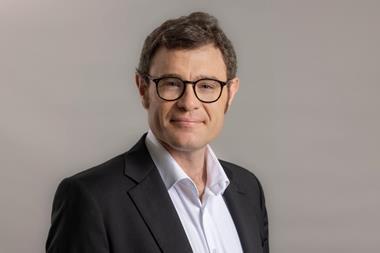Even the last Luddites in the pensions industry admit that websites are now a cornerstone of communication with scheme members. And with defined contribution schemes rapidly taking over from defined benefit, it has never been more crucial for members to be informed, say those around the industry - not least the regulators.
But websites are just one part of the technological resources that pension funds need in order to run efficiently. From benefits administration to investment risk management, systems must be up-to-date and fit for the specific tasks each scheme has to undertake. How, though, does a fund balance this requirement with the cost of it?
Fiduciary management is one pensions activity that is technology-heavy, and in the Netherlands, more pension schemes are choosing to outsource it, according to Erik van Dijk, chief investment officer of consultancy Compendeon.
"When looking at the Dutch market quite a few smaller and mid-sized funds are considering the outsourcing of activities," he notes. "Obviously to some fiduciary involves outsourcing of a substantial part of the administrative burden as well."
Funds that do choose the outsourcing route decide whether they want to be more or less involved with the administration, he says. Some organise this by establishing a solid relationship with a specialist that provides them with tailor-made solutions.
Where this is the case, a fiduciary manager carries out multi-manager investment management. The other option is for funds to buy a "total solution" in which the manager is briefed to find best-of-breed solutions not just for investments but other activities as well. "In the latter case the technology need of the pension fund is lower, although they do of course still have to judge what a good solution is so as to be able to hire the best fiduciary partner," says Van Dijk.
Using information technology is vital for pension funds, but it is also important for them to find the right level of IT development, says Claus Skadhauge, head of communications at Danish pensions administrator PKA.
Since IT is a very expensive business to develop, you obviously have to look for partners to share the expenses with," he says. "If you are a small pension fund, you may have to look for partners or outsource. If you are a big pension fund and capable of developing IT-systems of your own, you will look for business opportunities."
Hopefully, he says, these two parties eventually find each other.
"At PKA we have developed very advanced IT systems, but when developed they at once became subject to discussions on critical mass," he continues. PKA, which has 220,000 members, joined forces with two other Danish pension funds last year - Lærernes Pension and Pædagogernes Pensionskasse in a spin-off involving some of the basic services including IT.
"Altogether, approximately 450,000 members will now share the same basic IT systems, when it comes to members administration and financial services," says Skadhauge.The total administrative costs per member in the PKA pension funds is about €65, he says - a level unobtainable without large-scale IT operations.
"Within the investment area in general -not just fiduciary structures - the need for good risk management has increased," says Van Dijk.
The investment environment for pension funds has changed, with new asset classes emerging, more derivatives becoming available and the market situation more complex. Emerging markets have become more important, too, and this means pension funds have a greater need for control, Van Dijk adds.
"Traditionally parties like Wilshire and Barra have presented good solutions, but they were general solutions that were mainly US-orientated - built with a US client as their base perspective," he says. All software providers now agree that demands have changed and clients - the large and large mid-sized pension funds - want tailor-made risk management products, he adds.
The shift from defined benefit to defined contribution in many European countries has also spawned a need for information products, continues Van Dijk.
Also in terms of information dissemination, the client or member in a DC structure needs to be fed with good, clear information about the investment choice he or she has," he says. "That is not easy, since the majority of people will not have an investment background."
Examples in the US show that it can be done, but with a lot of work. As an example, he compares the depth of information available on Morningstar US compared with that for other countries. "Going to the websites of asset managers from the US versus the ones from other countries will illustrate how big the gaps sometimes are, especially at the individual strategy level," he points out.
"When going from DB to DC it is definitely necessary to provide members with far more information than is being done these days; and, actually, it is already a general trend in society that people want to know more what is going on with their money," according to Van Dijk.
Bad stories, about failing pension plans, or insurers and banks creating rip-off like structures, have also helped trigger this, he says. "People simply want more in-depth information about what is going on. And I believe that this is their right."
It is very important for pension schemes to have robust and up-to-date software solutions, given the size of their portfolios and the interests that are at stake, he says.
"These days trading, custody and administration and database software are of course of a sufficiently high level to cater to the needs of all," he says. They do not come cheap, but for pension plans of at least €100m, they are always affordable, he says.
But Van Dijk says pension funds looking to reduce the cost of necessary technology can outsource or use the services of an external specialist. "In the Netherlands, the Pensioen Cooperatie is an interesting pooling solution for smaller and mid-sized pension plans."
David Forbes, assistant chief finance officer at the Lincolnshire County Council pension fund, says his fund uses technology for various functions. Besides an asset management and accounting package, which has been upgraded, the fund also uses Bloomberg's system and Barra because it manages money in-house.
On the benefits administration side, the Lincolnshire scheme uses Heywood's AXISe system. Heywood's long-standing pensions administration system AXISe is used by 94% of local authority schemes in the UK, as well as big corporate schemes such as ASDA, House of Fraser and the Co-operative Society. Now the firm is offering its new pensions administration system Altair, which is fully browser-based.
Earlier this year, Heywood won a contract to supply pensions software to the Scottish Public Pensions Agency, worth £7.5mn over at least eight years, shortly after being taken on by the Northern Ireland Department of Health, Social Services and Public Safety.
According to Chris Connolly, senior consultant at Aquila Heywood - the group that includes Heywood - because there has been such a large volume of legislative change in the UK over the last few years, much of the technology pension funds are shopping for is about how they can meet their compliance needs.
"Trustees are thinking about how they can engage with employees, and technology is at the top of their wish list," he says. Web-based systems that allow scheme members to interact with administrators are becoming more common, albeit at a gradual pace.
"One of the reasons why it may have been slow is that the smaller pension funds see it as an extra cost," he says. But he adds that although trustees may put a web system up in order to communicate more effectively with scheme members, it can also be an opportunity for them to do more with the same budget.
"Schemes can genuinely save costs, both in terms of paper and ink, and other administration costs," he says, though the web will certainly not replace all traditional media for pension schemes. Members of pension schemes are demanding a higher level of information about their pensions, and this is one factor driving the move towards web-based services; another factor is the introduction of flexible benefits by companies, he adds.
But though the internet is technically an excellent communication tool, not everyone can or will use it. Mature pension schemes may set up web-based services, but these may not be used by the majority of their retired members.
"We're building a website so that members can get access to information without paper copies," says the manager of one UK pension fund. "But naturally as human beings we like bits of paper, and the vast majority of our members are pensioners."
Philip Mowbray, head of retail financial planning at Edinburgh-based financial risk consultancy Barrie & Hibbert agrees web services may not be appropriate for many older members of pension schemes. "That is something that has been identified by the regulator," he says.
"There's clearly going to be at that point a requirement for a number of different ways of communicating with members, and the internet is only going to be one of them.
"The level of information that's required for someone who's 30 years from retirement is different from that needed for someone five years away; there's a limit to how you can apply technology to support decision making at that point," says Mowbray.
"Investment can be supported by technology, but some members will still require quite close communication with advisers," he notes, pointing out that there is a lot of risk for the member from a compliance point of view in the run up to retirement.
At Mn Services in the Netherlands, Albert Garrelds, vice director pensions and services, agrees that good websites are a priority for pension funds.
"E-channels are very important for an organisation such as ours," he says. "Via websites, we not only communicate with consumers, but also with employers and other stakeholders that use our services. "A website performs an important role in terms of transparency. Visitors find a great deal of information on the organisation and can download a variety of publications," he says.
Offering web-based financial planning tools to scheme members has many advantages, according to Mowbray of Barrie & Hibbert.
"Not only can a member log on, but the scheme operator can log on and see information from a scheme level, finding out whether expectations and objectives are being met," he says. Members can look to see which type of investment would be appropriate for their risk profile, and consider whether to increase their contribution level and find out how these levels would help achieve certain levels of retirement income, he explains.
Earlier this year, the Pensions Regulator in the UK issued a consultation paper on how it would regulate DC schemes in relation to risks to members. Within the paper, it identified several main risks - poor administrative practices, poor investment practices, unduly high charges, poor retirement decisions and responsibilities.
"If you take almost all of these, clearly these planning tools being delivered are intended to address those issues," says Hibbert. "They are also trying to make the communication with members more effective."
In the DC market, Connolly says, pension schemes conducting investment in-house have to bolster their back-office logistics with systems that enable straight-through-processing. This allows schemes and their investment managers to transact electronically, which saves time and costs, but also produces other benefits.
From a governance perspective, efficient electronic transactions are positive because they reduce certain risks. "If you can trade electronically, there's a whole level of risk that you're avoiding - mis-keying, for example," he says. Aquila Heywood is seeing a lot of demand for pensions administration technology from asset suppliers across Europe, such as third party administrators looking to expand, and US companies seeking to centralise or rationalise pension provision through their European subsidiaries, he says.
Of course technological development will continue apace, and those in the pensions industry holding the purse strings will have to decide how to keep up. But what does the future hold for technology in pensions?
Mn Services expect to see an increase in the speed of data processing. The data exchange between companies and clients will become integrated, and the relationship between IT architecture and other business processes will become closer than it is today, according to Garrelds.
"Technology will no longer exist in isolation," he predicts.
Case study: PKA's website
In order to create a high level of service, openness and transparency, PKA chooses to share all information with its members, and the web is very effective way of doing this, says Claus Skadhauge, head of communications. Over the last few years, he believes the Danish pensions administration group has made members aware of how they can use the site to access information.
"An average of 12,000 to 15,000 unique visitors every month is a good indicator of this," he says. In May and June this year, members of the eight PKA pension funds had the opportunity to change their death-related benefits, and the campaign made wide use of the internet. Members were able to change their benefits directly via their own individual website, says Skadhauge.
"During one month more than 33,000 members looked for this information and more than 11,000 logged on," he says. It pays to have a website, he concludes.
About a quarter of all pension scheme members covered by PKA use the services on its website, he says, adding that as more new web services are introduced this year, that figure is expected to rise.
"PKA now also offers the individual member a full overview of his or her own pension scheme, with all the relevant correspondence available, via the website," he says.
Members can now get 24-hour access to the details of their individual pension as well as overall collective pension data.
They can, for example, find out the impact of changes in working patterns, by entering the new number of working hours and the date the change will become effective. The system then retrieves all necessary individual data and immediately calculates how this would affect the age at which they want to retire.
By signing up for it, members of the PKA funds can use the "e-Boks/e-Post" electronic post-box systems, and at the end of last year, about 60,000 standard consignments were sent out electronically via this system, with that number increasing rapidly, says Skadhauge.
"One of the most popular members' services in the PKA pension funds is the housing allocation service, where the members have first claim on about 6,500 of the pension funds' flats," he notes.
As well as this, the site has integrated the joint Danish "PensionsInfo" site, which presents individual pension data from most Danish pension funds in a single table.
On the open part of the website, visitors can monitor the financial development of the pension fund, solvency scenarios, return data, detailed share lists and other data, including annual reports.
There are also special shared networks hosted by the website for those logging on as delegates or board members. These sections give access to news, press cuttings, reports, board material, drafts for the annual general meetings, agendas, appendices, as well as the individual data.
On top of this, the site contains a portal mainly for smaller companies without large wage administration systems to use. "The employers can very simply retrieve general information about their employees' pension schemes, and sign up new members, make payments, etc., on this portal," he explains. About 410 companies use of this service.












No comments yet